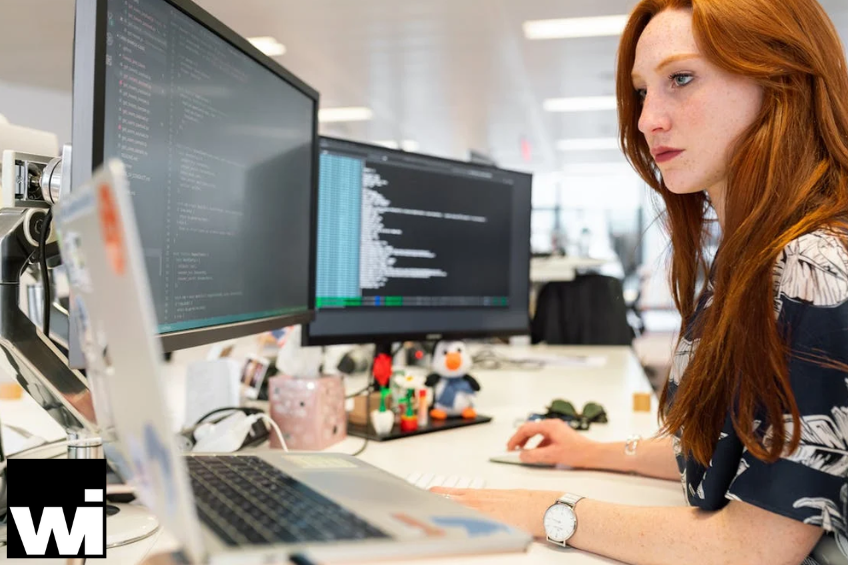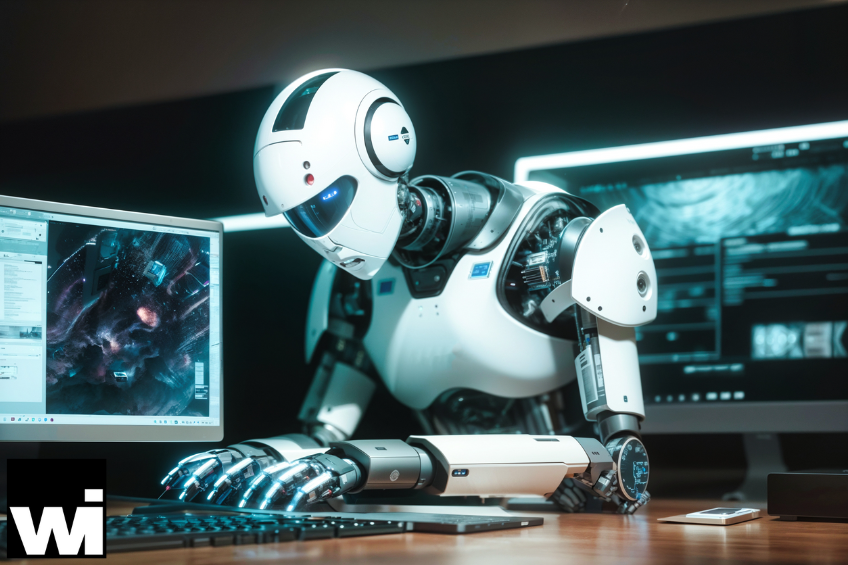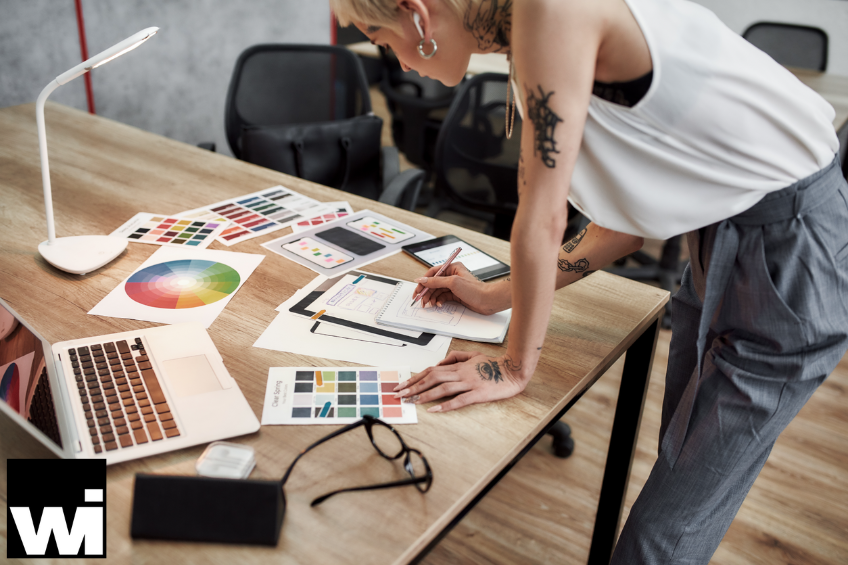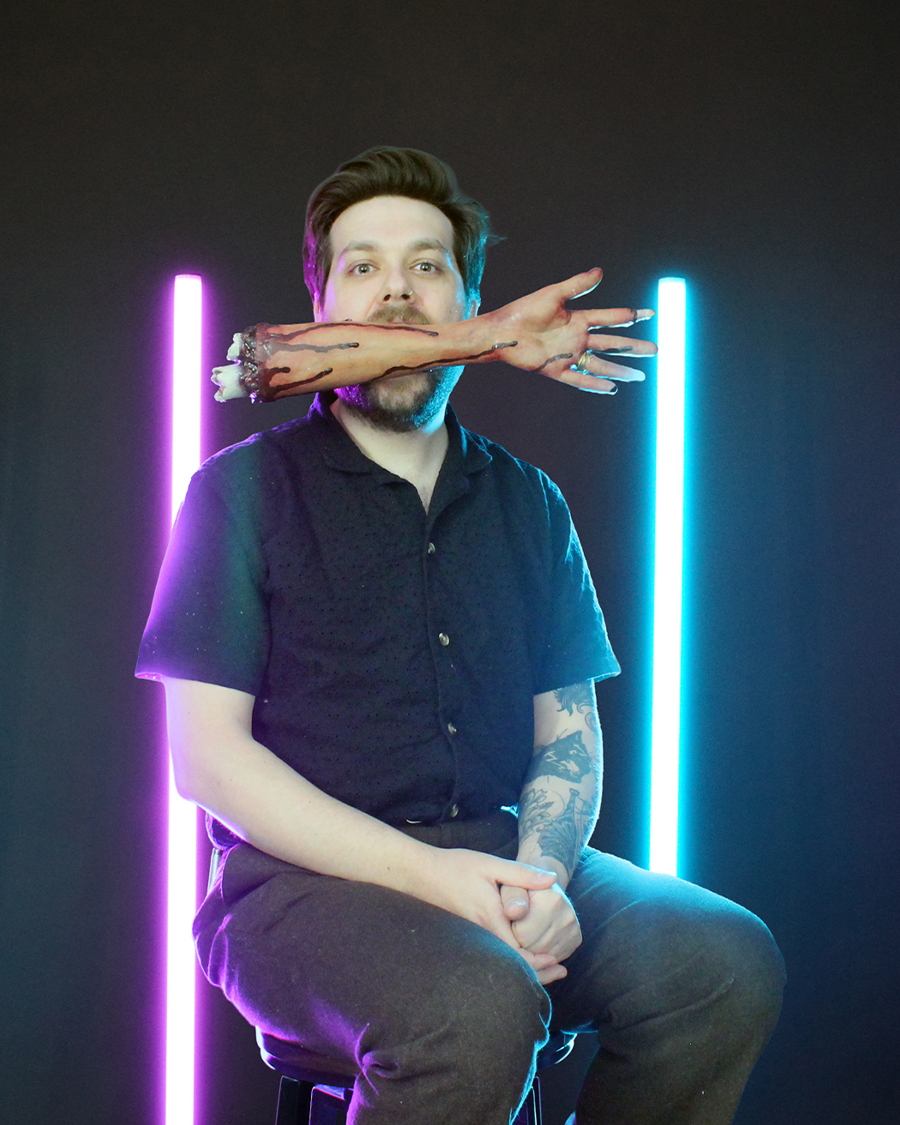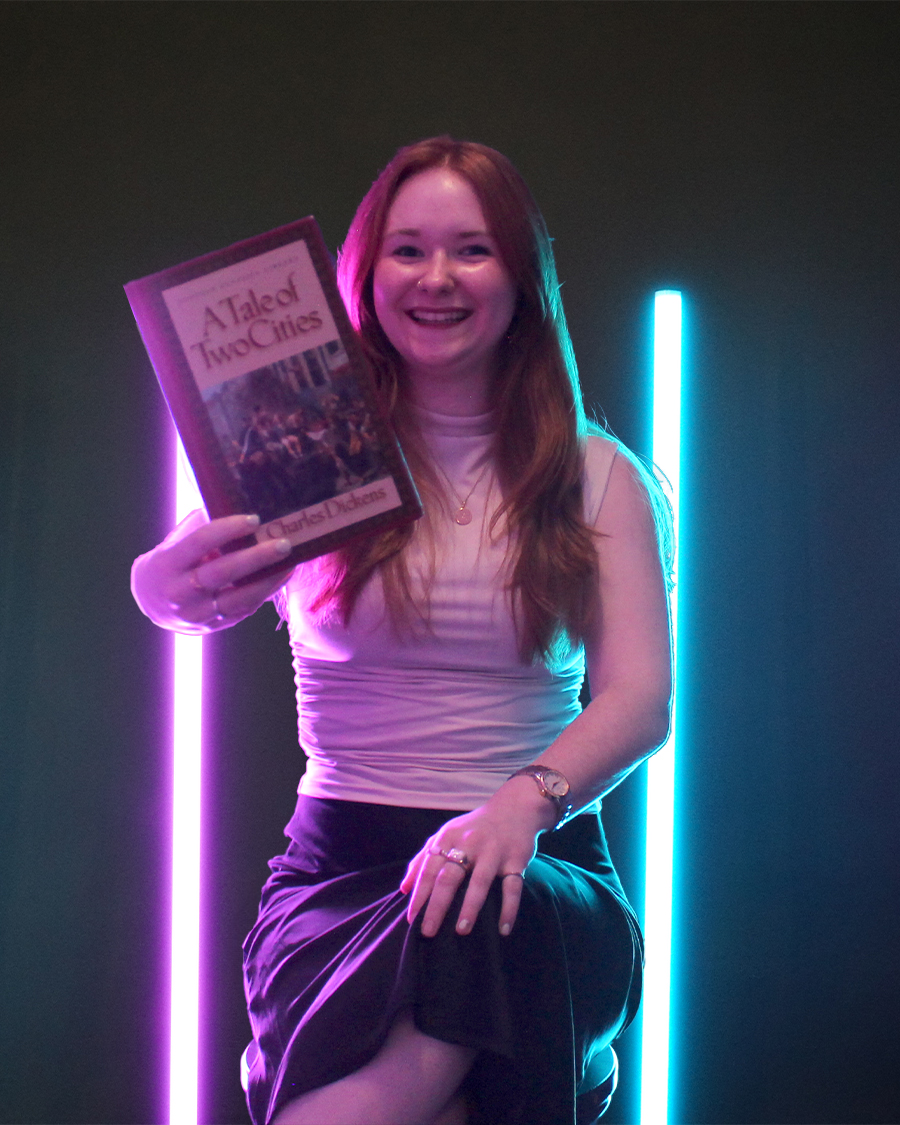Does Your Website Need to Block AI Scrapers? An SEO Guide to Robots.txt
Is your website at risk of being exploited by AI scrapers? As a small business owner or independent creative, you’ve likely invested time and effort into building a unique online presence. But what happens when automated bots start extracting your content without permission? AI scrapers are becoming increasingly sophisticated, and they can have serious consequences for your website’s performance and security.
This blog will explore the relationship between AI scrapers and robots.txt, helping you understand whether blocking these bots is the right move for your site. By the end, you’ll have a clearer picture of the risks and the steps you can take to protect your valuable content.
What We’ll Cover:
- What are AI scrapers and Robots.txt?
- How AI scrapers hurt your website
- The downsides of blocking AI scrapers
- How to implement Robots.txt on your website
- Key takeaways
What Are AI Scrapers and Robots.txt?
To understand how to protect your website, we first need to define what AI scrapers and robots.txt are. AI scrapers are automated bots that browse the internet, extracting and indexing content from websites. These scrapers use artificial intelligence to efficiently collect data, often without the website owner’s consent. The data they gather can range from text and images to metadata and entire web pages. They might expose your brand to content theft, increased server strain, and potential misuse of information.
On the other hand, robots.txt is a simple text file placed in your website’s root directory that provides instructions to web crawlers about which parts of your site they are allowed to access and index. Think of it as a rulebook for bots—legitimate web crawlers, like those used by search engines, follow the guidelines set by robots.txt to avoid overloading servers or accessing sensitive content.
However, not all bots play by the rules. Some AI scrapers deliberately ignore the instructions in the robots.txt file to harvest content they’re not supposed to access. Understanding how these tools interact is crucial for deciding whether or not you should block AI scrapers from your website.
LEARN HOW TO REACH MORE CUSTOMERS IN YOUR AREA
3 Ways AI Scrapers Can Hurt Your Website
Allowing AI scrapers to access your website might seem harmless, but it can come with significant risks that could impact your business and brand.
Misinformation
One of the most overlooked risks is the spread of misinformation. When scrapers extract content from your site, they might take it out of context, leading to distorted information popping up elsewhere. This oversight can harm your brand’s reputation and confuse your audience. Imagine someone misinterpreting your carefully crafted content and presenting it in a way that damages your credibility—definitely not a scenario any business owner wants to face.
By using robots.txt to block unwanted scrapers, you can safeguard your intellectual property and unique content. This step prevents unauthorized use and distribution of your work, ensuring that your creative efforts remain yours alone. For small business owners and independent creatives, this control is crucial to maintaining your brand’s integrity and preventing art theft and plagiarism.
Server Strain
AI scrapers can also place a heavy load on your website’s server. Since these bots often operate without any regard for bandwidth limitations, they can repeatedly access your site, causing a spike in traffic that your server may not be equipped to handle. This load can slow down your site for genuine visitors, potentially driving them away due to poor user experience. In severe cases, excessive scraping can even lead to your website crashing, causing downtime that could cost you both in terms of sales and customer trust.
Blocking scrapers can reduce the load on your server by limiting access to only essential web crawlers, like those used by search engines. That way, your website remains fast and responsive for real visitors, providing a better user experience. A quicker site can also improve your SEO rankings, as search engines favor websites with faster load times.
Theft, Plagiarism, and Copyright Infringement
Perhaps the most concerning risk of allowing scrapers is the potential for content theft and copyright infringement. AI scrapers can easily copy your original text, images, and videos and use them on other sites without permission. This theft not only reduces your control over how your content is presented but can also hurt your SEO rankings if search engines detect duplicate content. Worse yet, if your original work is reproduced or modified, it could be used in ways that violate copyright laws, leaving you to deal with legal repercussions.
A properly configured robots.txt file allows you to decide which parts of your site are accessible to different bots. By managing this access, you can reduce the risk of your content being misused or misrepresented, thus avoiding the spread of misinformation and potential legal issues related to copyright infringement.
The Potential Downsides to Blocking AI Scrapers
Using robots.txt to block AI scrapers gives you the power to protect your website, optimize performance, and maintain control over your digital assets. While blocking AI scrapers with a robots.txt file has its benefits, there are a few potential downsides to consider.
Reduced Visibility
Blocking too many bots could inadvertently limit your website’s visibility on search engines. Some scrapers are part of legitimate tools and services that help improve your site’s reach and SEO. By blocking these bots, you might miss out on valuable opportunities to increase your site’s visibility and attract more visitors.
Missed Opportunities
Certain AI tools used by marketers, researchers, or aggregators could benefit your website by driving traffic or improving SEO. If you block these bots, you may lose out on the positive exposure they could provide.
Technical Complexity
Managing a robots.txt file can be technically challenging, especially for those without coding experience. Misconfiguring your file could lead to accidentally blocking important search engines, harming your site’s visibility and SEO performance.
Considering these downsides is crucial when deciding whether or not to block AI scrapers from your website.
GET REAL ADVICE FROM LOCAL MARKETING EXPERTS
How to Effectively Use Robots.txt for Your Website
If you’ve decided that blocking AI scrapers is the right move for your website, it’s crucial to know how to effectively use a robots.txt file to achieve this. Here’s a step-by-step guide:
- Create or Locate Your Robots.txt File: If your website doesn’t already have a robots.txt file, you’ll need to create one. This file is a simple text file that should be placed in the root directory of your website (e.g.,
www.yoursite.com/robots.txt). - Define Your Rules: Use specific commands to block or allow access to different parts of your site. For example, to block all bots from accessing a directory, you would use:
User-agent: *
Disallow: /directory/
To block only a specific bot, replace the asterisk (*) with the bot’s name.
- Test Your Configuration: Before going live, use online tools or your website’s hosting platform to test your robots.txt file. A proper test can verify your rules so you’re not accidentally blocking search engines or other useful bots.
- Monitor and Update Regularly: AI technologies and web crawlers are constantly evolving, so it’s essential to periodically review and update your robots.txt file to ensure it remains effective.
By following these steps, you can effectively use robots.txt to protect your website from unwanted AI scrapers while maintaining SEO best practices.
Key Takeaways
Understanding the role of AI scrapers and how to use robots.txt is crucial for protecting your website. While blocking scrapers can safeguard your content and improve server performance, it’s important to balance this with maintaining SEO visibility and taking advantage of beneficial bots.
Ready to optimize your website’s SEO while protecting your valuable content? Contact Worcester Interactive today for expert advice and resources on managing robots.txt files and enhancing your online presence. Let us help you secure your website and achieve your digital marketing goals. Get in touch now!
Connect with Us
You can find us on Facebook, LinkedIn, and Instagram @WorcesterInteractive.
About Worcester Interactive
Worcester Interactive is an award-winning, full-service digital marketing company in Worcester, MA, specializing in responsive web design, search engine optimization (SEO), digital advertising, and social media marketing. We build stunning, responsive websites and online marketing campaigns for businesses looking to grow their online presence. We’ve built a reputation for tackling challenging projects that require a creative content strategy, thoughtful design, demanding development, and interactive web marketing.
Create the Best First Impression for Your Business
Is Generative AI Going to Be the Death of Creative Design Jobs?
Are writers, artists, and graphic designers facing extinction in the age of creative AI? With the rapid development of AI technologies, this question is more relevant than ever. Tools like ChatGPT, Midjourney, and DALL-E have made it easier than ever to generate art, music, and video from scratch with just a few clicks. This development has sparked fears and controversies around art theft and the future of creative jobs.
Will generative AI truly replace creative professionals or serve as another tool in their creative process? AI is more likely to augment rather than eliminate creative processes, with clear examples of human ingenuity at the forefront of the arts. Keep reading to learn how this technology has changed the trajectory of digital marketing.
What We’ll Cover:
- The rise of AI in creative industries
- The intersection of technology and art
- AI as a tool for artists
- The impact of generative AI on creative jobs
- Key takeaways
The Rise of AI in Creative Industries
The advent of creative AI like ChatGPT, Midjourney, and DALL-E has changed the way we think about design and marketing. These tools have made it possible for anyone to generate complex, stunning artwork, music, and videos simply by inputting a few text prompts. The accessibility and scale of these platforms have simultaneously raised excitement and concern for career designers.
The ability of generative AI to produce high-quality imagery in seconds is nothing short of impressive. Artists and designers can now use these tools to experiment with new sketches, storyboards, and site maps. They can push creative boundaries and streamline their workflows. The latest model of Midjourney can transform words into intricate images. DALL-E, meanwhile, generates unique and imaginative art pieces from simple descriptions.
Criticisms Surrounding AI Art
However, this technological leap has also sparked debates about art theft and the potential devaluation of human artistry. Critics argue that AI-generated art has flooded the market as cheap competition, making it harder for traditional artists to compete and earn a living. The fear is that as AI becomes more prevalent, the unique human touch in art may become less valued. That’s why some design software companies like Adobe are testing ways to pay artists to train on their work with their consent.
AI companies can definitely do a better job at respecting the use of artists’ likenesses, portfolios, and privacy. That said, many industry experts believe that AI will not replace artists and creatives. Rather, it will change the way they work, offering new tools and opportunities for innovation.
LEARN HOW TO REACH MORE CUSTOMERS IN YOUR AREA
The Intersection of Technology and Art
Generative AI is far from the first revolution in creative expression. The printing press, the roller brush, and the first computers all met backlash from established artists and writers. When photography was invented in the 19th century, many painters feared it would render their skills obsolete. Instead, photography emerged as a new artistic medium, pushing painters to explore other forms of expression like Impressionism and Abstract art. Similarly, the introduction of digital tools in the late 20th century transformed graphic design and animation, creating new opportunities for media that weren’t previously possible.
The current rise of generative AI is the next chapter in this ongoing history. Just like previous technologies expanded artists’ toolkits, creative AI is proving to do the same. The invention of the camera did not eliminate painting; it changed the nature of visual art. The ability to instantly generate art, music, and design elements offers a new medium for brainstorming and testing.
The integration of AI into creative fields continues this tradition, allowing artists to blend traditional design with cutting-edge techniques to produce unique and compelling works. This historical perspective reassures us that, while technology evolves, it doesn’t have the same spark that can create original styles and movements. These tools cannot and should not be a replacement for human ingenuity.
AI as a Tool for Artists
The emergence of creative AI tools has radically transformed what artists can achieve in video editing, animation, logo design, and more. These tools offer new ways to expedite the artistic process, including faster ways to create variations of frames and shots. Let’s explore three key techniques that are saving artists time and resources: inpainting, outpainting, and image-to-image manipulation (img2img).
Inpainting
Inpainting involves using AI to fill in missing parts of an image. This technique allows artists to remove sections of an image and have the AI generate multiple options on how to fill it. These text prompts might include everything from color correction to changing the composition. For example, an artist might start with a rough sketch and use inpainting to explore different models of the finished piece. In this sense, the tools act as a shortcut for visualization.
Outpainting
Outpainting, also known as “uncropping,” enables artists to extend an image beyond its original borders. By providing an existing image and a text prompt, AI can imagine and render the surrounding context, effectively expanding the artwork. Outpainting can help artists flesh out backgrounds and landscapes, illustrating a new perspective and adding depth to their creations. For digital artists, this resource is a game-changer that can quickly match image dimensions across multiple platforms.
Image-to-Image (img2img)
Image-to-image techniques involve generating new graphics from existing ones guided by text. Think of it as connecting the dots between two different works. This option lets artists take a preliminary sketch or an AI-generated image and iteratively refine it into a polished draft. Artists can experiment with different styles and concepts quickly, seeing real-time changes as they adjust the input. This workflow mirrors traditional art processes, where artists start with a basic idea and gradually develop it into a final piece, but with the added speed and versatility of AI.
GET REAL ADVICE FROM LOCAL MARKETING EXPERTS
The Impact of Generative AI on Creative Jobs
While generative AI tools are powerful, they’re not anywhere near ready to eliminate marketing teams, filmmakers, and designers. Instead, they’re transforming the day-to-day skills and responsibilities of creative professions.
Reports and studies suggest that AI will alter the skill sets required for creative jobs. For instance, a report by the World Economic Forum highlights that while AI can automate certain tasks, the demand for creative professionals who can leverage these technologies is growing. Artists and designers who can harness AI tools at scale will be in high demand, especially when it comes to marketing small businesses.
Beyond that, AI has the potential to make creative professions more accessible. For individuals with disabilities, creative AI tools can provide new ways to engage with art and design, breaking down barriers that previously existed. For example, speech-to-text prompts can help develop illustrations, and smart color filtering can help visually impaired artists. By automating repetitive tasks and assisting with complex processes, AI allows artists to focus on the conceptual and expressive aspects of their work.
In fields like web design, AI can handle technical elements like coding and layout adjustments, letting designers concentrate more on user experience and less on technical know-how. This synergy between individual creativity and AI efficiency represents the best of both worlds. Ultimately, AI is not a threat to creative jobs but a catalyst for evolution within the industry.
Key Takeaways
The future of generative AI is not meant to replace artists but to transform how they work. By integrating tools like inpainting, outpainting, and image-to-image techniques, artists can expand their creative boundaries and improve the quality of their work. Historical parallels show that new technologies have always reshaped, but not eliminated, creative professions. Remember, AI is a supplement, not a substitute. Embrace these tools to unlock new potential and ensure your creative work stands out.
Interested in leveraging creative AI to enhance your artistic projects or improve your web design? Contact Worcester Interactive today for expert guidance and resources. Let’s work together to integrate AI into your creative process and take your work to the next level. Reach out now to get started!
Connect with Us
You can find us on Facebook, LinkedIn, and Instagram @WorcesterInteractive.
About Worcester Interactive
Worcester Interactive is an award-winning, full-service digital marketing company in Worcester, MA, specializing in responsive web design, search engine optimization (SEO), digital advertising, and social media marketing. We build stunning, responsive websites and online marketing campaigns for businesses looking to grow their online presence. We’ve built a reputation for tackling challenging projects that require a creative content strategy, thoughtful design, demanding development, and interactive web marketing.

